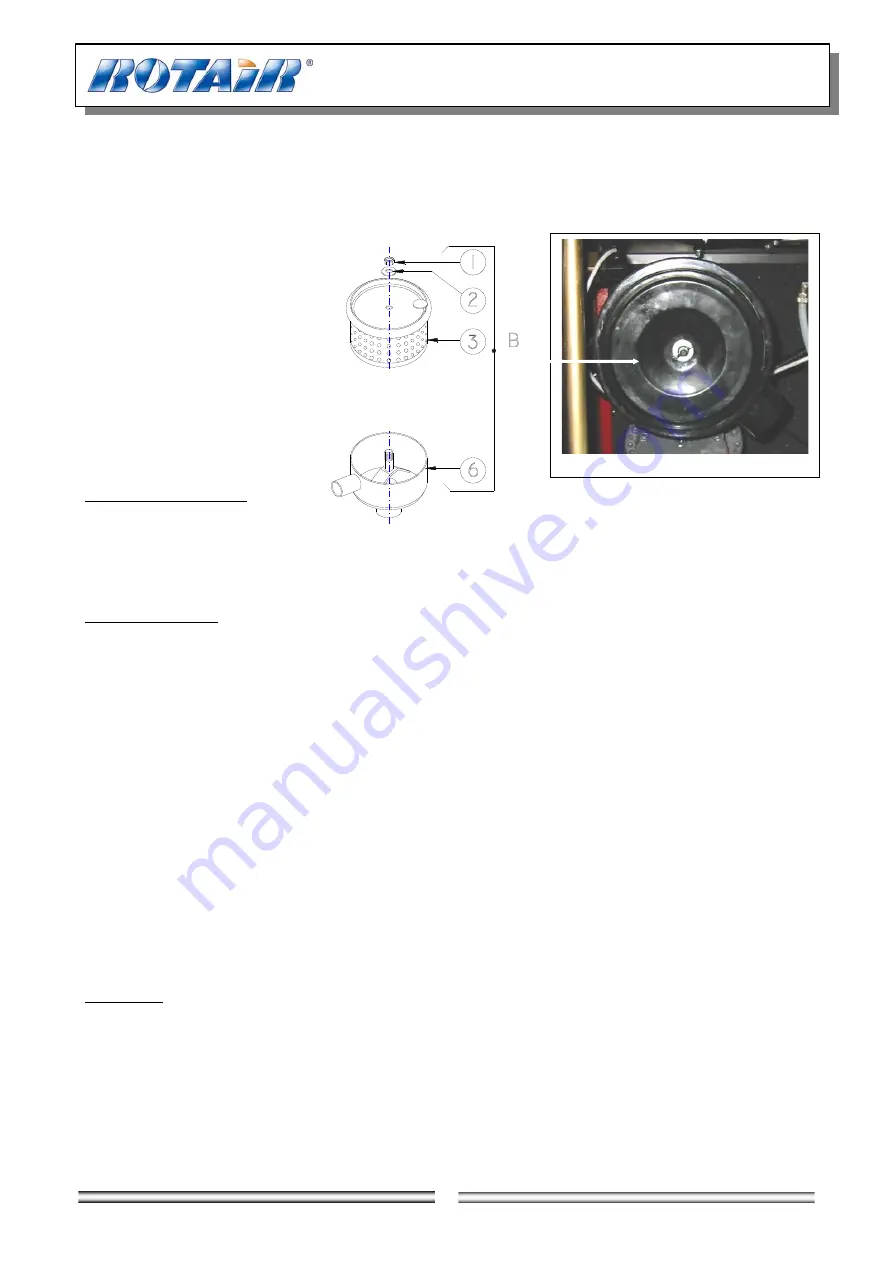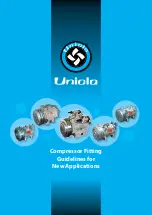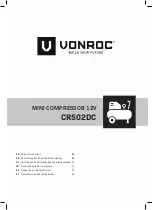
33
-- 12.11) AIR FILTER MAINTENANCE
--
The compressor life and efficiency
greatly depend on an accurate
maintenance of the air filter. A
clogged filter reduces the efficiency
and causes an early wear of the
compressor.
In normal environmental conditions
clean the air filters every 100 hours
work and change the air filter after
500 hours work. In very dusty
environmental conditions clean as
often as required.
FILTER DISASSEMBLY
1. Unscrew nuts
2. Extract the closing flange
3. Extract the air filter
FILTER CLEANING
Accurately blow the air filter inside out. The above operations should be carried out in the reverse order
to fit them back again.
-- 12.12) SUCTION FILTER AND ITS MAINTENANCE --
RVK compressors have been designed and made to operate in an environment at a max. temperature of
40°C;
should the machine be installed in a small ill-ventilated room because you have no other choice, it will
be necessary to make a ventilation duct for air suction and a second duct for letting hot air out. Both
ducts shall be connected with the outside and set in such a way as to prevent suction air from mixing
with exhaust air. They shall have an adequate size with open-radius bends. An incorrect sizing would
reduce ventilation and cause compressor overheating.
The room shall be well aired , clean and as close as possible to the distribution mains network. Should
the compressor operate in a very dusty environment, clean air shall flow freely: this can be achieved by
replacing the filter often enough (on the vent).
A dirty clogged filter reduces and slows down the quantity of air being sucked in necessary for
ventilation with a consequent harmful overheating of the unit.
WARNING:
type, density and thickness of the filter have been designed and selected not to brake the
sucked in air too much. Therefore the spares shall always be original ROTAIR S.P.A. spares. Should
other materials be used the guarantee on the machine will become null and void.
The machine shall be installed by leaving free space around it for ordinary and extraordinary
maintenance operations.
Fig. 14
















































